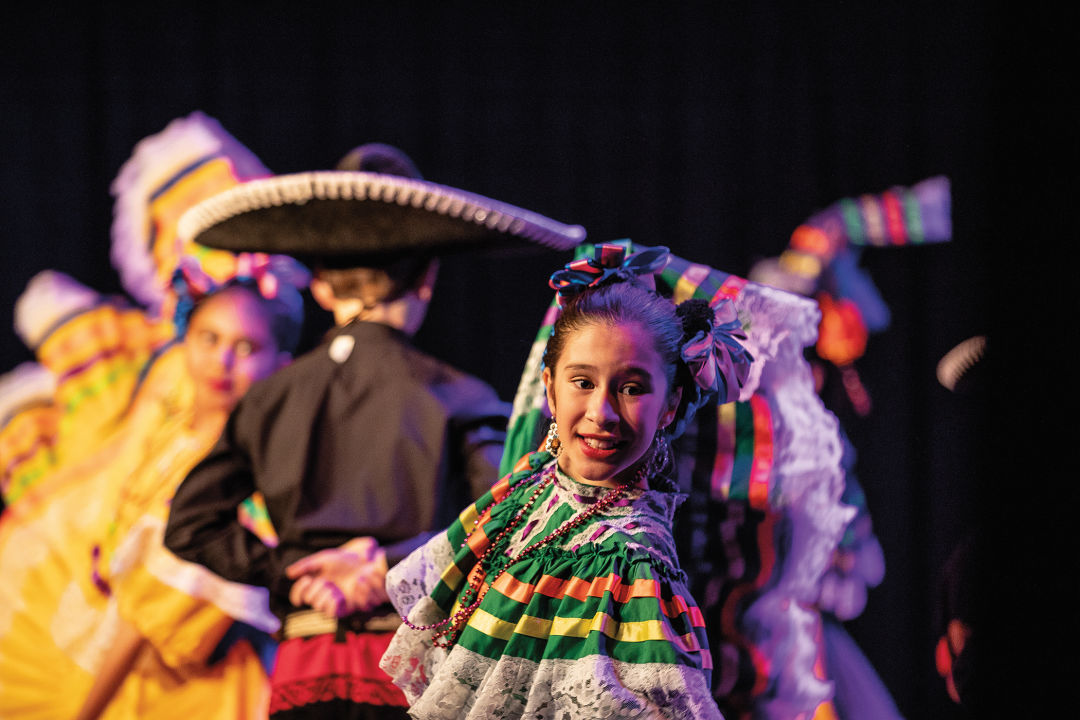The Aspen Santa Fe Ballet Reinvents Itself

The ballet’s popular Folklórico program will continue.
Dance is all about movement. So when Covid forced the performing arts to suddenly halt for much of 2020, Aspen Santa Fe Ballet (ASFB) had to assume an entirely new position.
“Movement and morphing and evolution is usually how we respond to challenges, and the pandemic was the challenge of all challenges,” says Jean-Philippe Malaty, ASFB’s executive director. “Responding with change felt natural to us.”
In early March, nearly one year into the pandemic, Malaty and Artistic Director Tom Mossbrucker announced one of the nonprofit’s biggest changes in its 30-year history: ASFB dissolved its acclaimed 11-dancer company. The ballet school—the foundation of the organization—would continue intact, with six locations from Aspen to Rifle and in Santa Fe, as would the Folklórico program, which teaches and performs traditional Mexican dance.
ASFB’s role in presenting dance companies will also carry on—Malaty is hopeful performances can resume next winter. But the change most apt to determine its future is the launch of the Aspen Santa Fe Ballet Fund for Innovation in Dance, aimed at rebuilding ASFB’s existing programs and, longer term, commissioning new works, providing residencies for touring companies, and forging connections among dance leaders and other artists and organizations.
“The only thing sunsetting is our role of producer of dance and having to support a resident full-time company,” says Malaty, who points out that ASFB has always been a hybrid organization, as well as one that’s always done things in a unique way. “The fund will preserve dance in Aspen and Santa Fe for many years.”
What started as a single ballet studio in 1991 expanded five years later when founder Bebe Schweppe brought Malaty and Mossbrucker—fellow Joffrey alums—to Aspen to form a dance company, a rather gutsy move for a relatively small market. Maintaining the company was challenging, says Malaty, noting that other organizations with seasonal performance schedules, like the Aspen Music Festival and School and Theatre Aspen, don’t pay a full roster of artistic faculty year-round. “It was a luxury having what we had,” he notes.
Santa Fe was added as a second home in 2000, doubling the potential for audiences, patronage prospects, and students. Casting even further, ASFB helped develop choreographers, commissioned new works, added a Mexican folk dance component, and—very rare—invited competing troupes to perform on the company’s home stage. By 2021, the company had commissioned 40 new works, performed almost 100 ballets, and toured the world, with plans for a 25-city tour and a debut in Germany quashed by the pandemic.
When the decision was made to disband the dance company, there was “a lot of grieving,” says Malaty, but “we asked ourselves: What is the legacy of ASFB? And very quickly, this pioneering spirit and spirit of innovation came to the top of the list.”
Adds Mossbrucker: “In order to remain impactful and relevant, we couldn’t remain status quo. We had to make a radical change.”
Instead of considering themselves victims of the pandemic, Malaty and Mossbrucker, with the support of their “forward-thinking board,” decided to reinvent the organization with the Fund for Innovation, which is backed partially by ASFB’s $10 million endowment. While details are still being worked out and the fund’s focus may evolve over time, this project is no less than a reenvisioning of the model for smaller dance companies, with a goal of returning the art form to American stages in a reinvigorated and more sustainable fashion.
As the organization forges ahead, Malaty says he’s most looking forward to “giving back to the field that has made ASFB so successful the last 25 years.”
Mossbrucker says he can’t wait for “being in a theater packed full of people, seeing a premiere of a commissioned piece, feeling that collective moment of people being together and watching a live dance performance. There’s nothing like it.” Despite the company’s shift in direction, that sentiment is very much in line with the way things have always been.













































